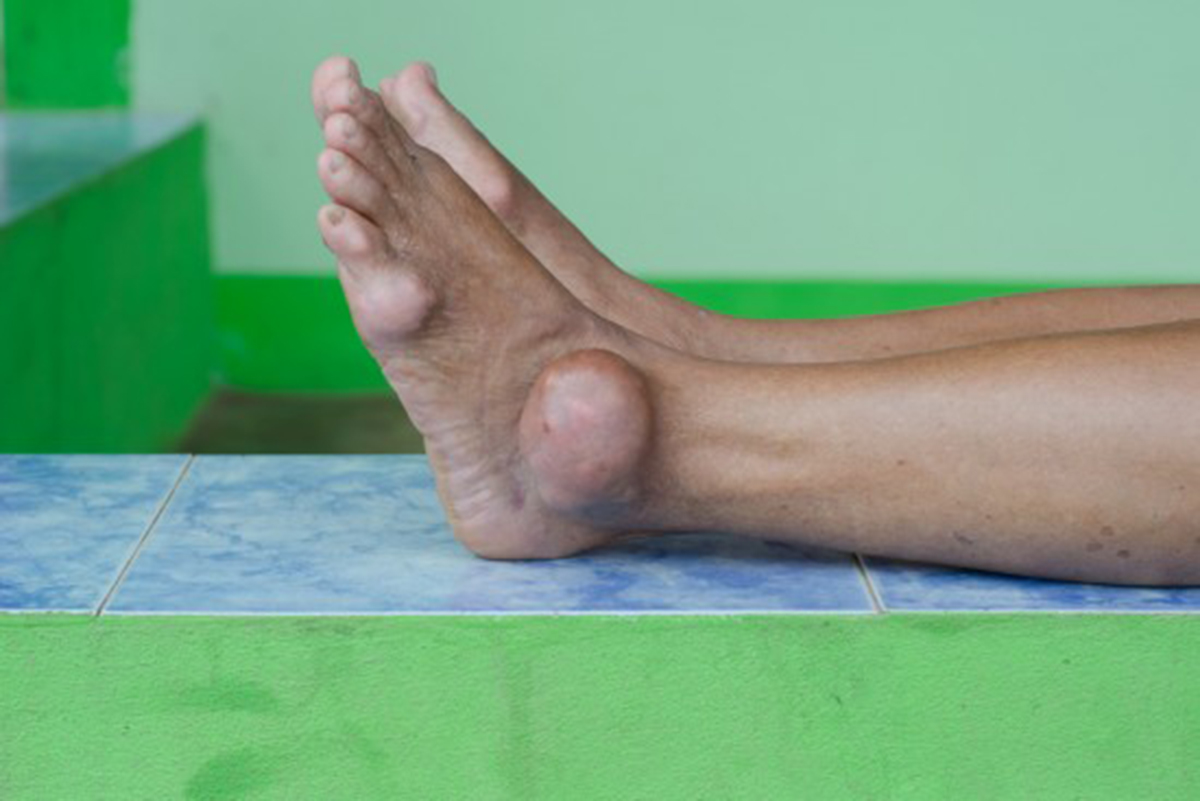Uric acid in the bloodstream looks like little crystals that attach themselves to the cartilage of joints, tendons, and the tissues around the joints. The most common places gout attacks, is the big toe, but it can affect the ankles, knees, and fingers, basically any of the smaller joints through out the body. It causes extreme pain to the affected joint. Gout is also known as the metabolic arthritis and is one of the most common illnesses recorded.

Four stages of gout
- Uric acid levels high in the bloodstream, but no symptoms. You may not realize this unless you had some random blood work for some other problem.
- Sudden onset of the gout is very painful. This is the one that most people have because they notice it and usually call the doctor, because of the pain.
- Interval gout is the frequency of attacks. This will increase in untreated patients and it is when you can start to have joint damage that can progress.
- Chronic Tophaceous gout is the gout that has progressed to the point where large deposits of uric acid have formed and you have deformities in your joints.
Most inflicted groups and the reasons for developing gout
More men than women are inflicted with gout. It is believed that because men have a higher uric acid level in their system than women. Gout usually hits men after puberty or between the ages of 40 to 50 years and after menopause for the women. Genetics may also increase your risk. There are unfortunately also some diseases that can lead to an increased uric acid level in the body like leukemia, lymphomas and hemoglobin disorders. Obesity, diabetes, hypertension, and some forms of heart disease also raise the risk. Many people believe that diet plays a huge roll in gout, by not only increasing your chances, but preventing it as well. Wouldn’t you want to prevent it rather than getting it?
Vitamin C may reduce the frequency of attacks
Foods and medications that ease the gout
There are foods that are rich in vitamin C naturally like tomatoes, citrus fruits, cantaloupe, broccoli, spinach, green peppers, cabbage and potatoes, so eat up. Other natural products that are also believed to help with reducing the uric acid levels in the body are cherries or other dark color fruits like blackberries. Coffee, regular or decaffeinated was also note to help. Avoid alcohol because this inhibits the kidneys to disguard the uric acid from the body.
Some prevention methods are the vitamin C intake by foods like dark colored fruit, or vegetables like cabbage and potatoes. There are also medications that help block the uric acid production or improve the uric acid removal in the bloodstream through the kidneys. Cutting back on red meat, seafood, and avoiding alcohol helps. It is also said if you increase your intake of low-fat dairy products, eat more complex carbohydrates like whole grain breads and always drink plenty of fluids, which helps to dilute the uric acid in the body. You don’t want to get dehydrated. Losing weight if needed also is thought to decrease the uric acid levels, so exercise.
Most common risks for getting gout
Remember the risk for getting gout:
- being a male
- family history
- obesity
- moderate, regular, or heavy alcohol intake, especially beer
- diet rich in proteins like meat and seafood
- medications that remove salt and water from the body
- regular use of Aspirin
- frequent episodes of dehydration
- sudden onset of an illness or infection
- lead exposure from work, diet, or hobbies
- low calorie diets
- injury to joints
Simple guidelines that may prevent gout attack
Gout is treatable. If you can remember these simple guidelines it may help or prevent a “gout” attack:
- contact doctor as soon as possible to help with pain
- rest, to much activity can cause a flare again
- use ice on the affected joint
- reduce future attacks by, drinking lots of fluids to help dilute the uric acid, watching your weight and exercise. Watch what you eat, take extra sources of vitamin C and always listen to your doctor. Remember to always ask your doctor first before starting medication even vitamins.
Unfortunately there are some long term effects of gout, if left untreated, such as joint damage, kidney stones or damaged kidneys, and the potential for nerve damage to the affected area that may cause deformities. So if you do or think you have a gout problem talk to your doctor. There is no reason for you to live in pain.
- www.gout.com
- www.sciencedaily.com/releases/2009/03/090303162007.htm
- altmedicine.about.com/od/gout/a/goutremedy.htm
- www.decodeme.com/gout
- www.medicinenet.com/gout/article.htm
- www.msnbc.msn.com/id/29603827

